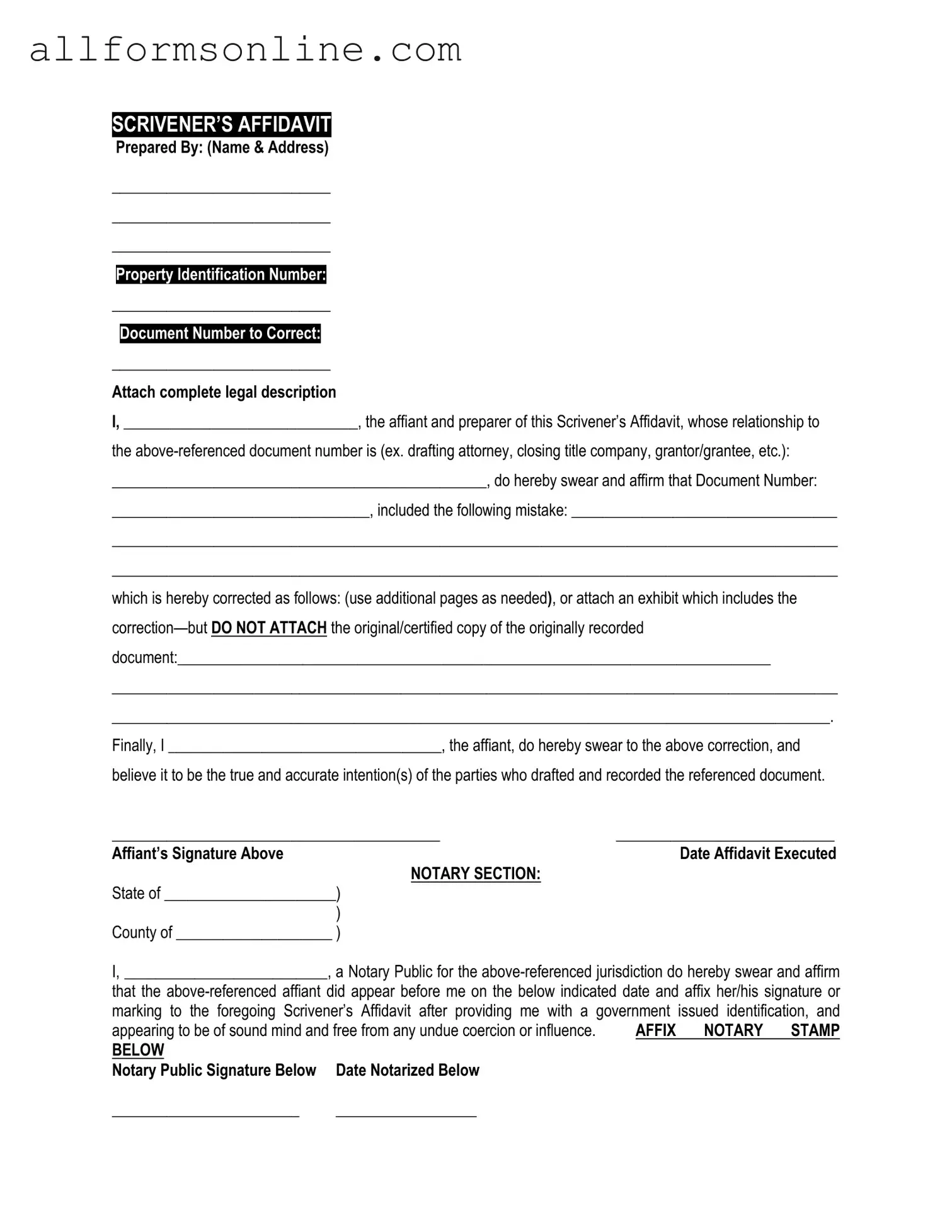Free Scrivener's Affidavit PDF Form
The Scrivener's Affidavit is a legal document used to clarify and correct errors in written instruments, such as deeds or contracts. This form serves as a tool for ensuring that the intentions of the parties involved are accurately reflected in the final documents. If you need to fill out this form, click the button below to get started.
Fill Out Your Form Now
